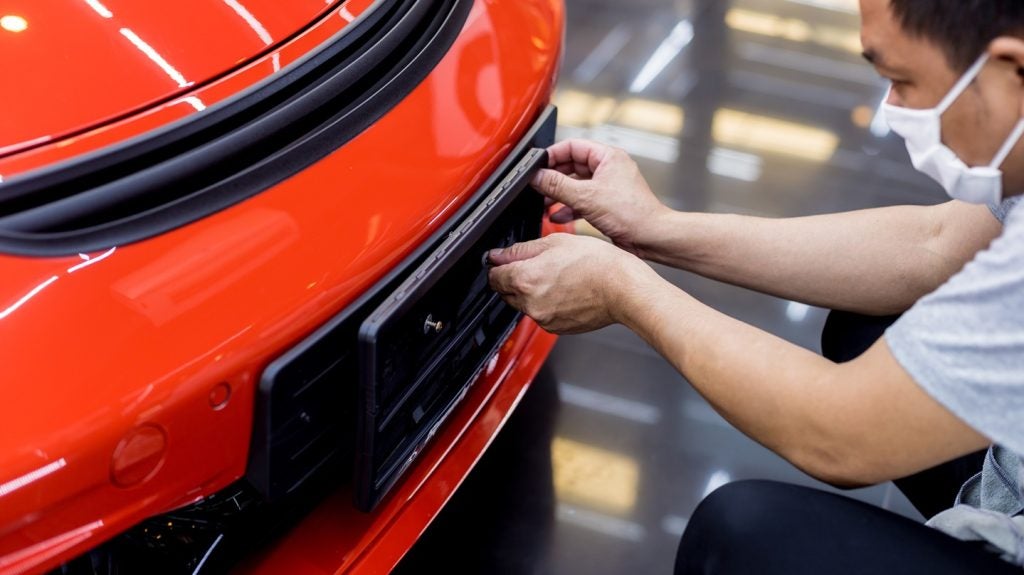
After a year spent at home, individuals around the world are itching to get going again. As countries begin to recover from Covid-19 and the mass movement of society resumes, the available mobility systems must be efficient, accessible, and sustainable. Hannah Wright explores a promising solution: Mobility-as-a-Service.
Covid-19 was a harbinger of digital transformation in society. As entire industries were relocated to the confines of our own four walls, technological advancement was crucial for organisational survival. Elsewhere, individuals were forced to overcome a prolific reluctance towards the sharing of data, due to systems such as Test and Trace which are founded on the very concept. There is a willingness to engage with digital services like never before.
Beyond data and digitalisation, another significant societal shift can be seen within individual and collective mobility. As individuals stayed at home, commuter populations plummeted, and employees opted for a morning stroll over the 8.15 to Victoria. Local high streets were revitalised, and the importance of having access to open green spaces, and a pleasant local environment became indisputable.
Perhaps controversially, residents across several cities awoke to find their central roads closed to motor vehicles, in an attempt to reduce growing traffic congestion and improve our urban environments. People want more liveable cities. For many, this involves making them less vehicle-centric.
At the intersection of these two themes is Mobility-as-a-Service, or MaaS. MaaS involves the integration of various modes of transport along with information and payment functions into a single mobility service. The concept is expected to cause significant disruption in both automotive markets and the wider ecosystem. The shift towards MaaS has been ongoing in the automotive industry for several years, and by 2030 MaaS will represent 25% of new car sales.
According to Steve Jones, future fleet solutions director at LeasePlan, “the trend of integrating various forms of transport into a single, on-demand mobility service is expected to gather momentum over the coming years, as the urban population across the world continues to grow on an exponential scale.”
How well do you really know your competitors?
Access the most comprehensive Company Profiles on the market, powered by GlobalData. Save hours of research. Gain competitive edge.

Thank you!
Your download email will arrive shortly
Not ready to buy yet? Download a free sample
We are confident about the unique quality of our Company Profiles. However, we want you to make the most beneficial decision for your business, so we offer a free sample that you can download by submitting the below form
By GlobalDataIndeed, the UN predicts that by 2030, countries such as the US, Mexico, Canada, the UK and Spain, will see 80% of their populations residing in urban centres. While 2030 remains eight years away, Jones believes the transition to MaaS is already underway: “Those who can do without personally owned modes of transport, especially those living in urban areas, are now moving towards Mobility-as-a-Service over traditional ownership.”
Explaining the changes, Jones adds: “Increasingly stringent environmental legislation has led to manufacturers designing and developing more sustainable and eco-friendly vehicles, while a change in consumer demand has sparked a shift in the way vehicle ownership is viewed and offered.”
Usership versus ownership
MaaS is having a profound impact on the automotive industry, with car customers now demanding far greater levels of flexibility and convenience. Jones continues: “We are seeing a significant rise in popularity for Cars-as-a-Service, where drivers can gain immediate access to a vehicle on demand without the need for outright ownership. Increasingly, ownership of a car will mean ownership of a virtual object, instead of the current normality of owning a physical object.
“This isn’t alien territory for today’s consumers; many of them will already use online streaming services like Spotify and Netflix, which base their business models around experience rather than the accumulation of stuff.
“For urban dwellers, there are services which currently offer timeshare ownership of a car, but these don’t solve some of the pains of motoring such as urban parking, congestion, or the need to drive the car. However, vehicle manufacturers and increasingly tech companies are looking at developing possible solutions.”
The car share model presents a major opportunity for future mobility solutions. According to Jones: “For customers who currently have a leased car but feel that their limited usage means that it’s not cost-effective, there’s the option to allow others to use the vehicle and generate an income that would offset some of their costs. For those who own a car but have limited usage, or those without access to personal transport, there will be a growing number of mobility models to take advantage of. All of this will give drivers and fleets far greater flexibility, while challenging many car owners to consider how to transition to more environmentally friendly modes of transport such as EVs.”
Jones adds that new attitudes towards non-traditional ownership of, and access to, vehicles looks set to open up a third option beyond purchase and leasing. “It should be the leasing company’s role not just to provide cars, but to discover and even develop all the services that modern organisations need – and make them easily available.”
As domestic car sales fall, many motor finance firms may face the risk of declining revenue. While the fall in demand could be partially offset by higher-value EV and autonomous models, a pivot in the company’s business model to include more MaaS services could be the answer.
The rise of car subscriptions
The Future of Mobility 2030 by KPMG anticipates three broad changes within the industry: the rise of fleet financing; diversification of customers and channels; and the development of new propositions. Although responses to such changes will vary between different market players, one proposition that may be particularly lucrative to motor finance firms is that of car subscriptions.
Car subscription services, already introduced by Jones, are a way for drivers to have access to a vehicle without having to own or lease one. Drivers sign up to a monthly plan for a particular car, paying a monthly fee that typically covers insurance and maintenance.
Stephen Dawson, a partner at Shoosmiths, believes car subscriptions will play a key role in the mass movement of people in the future. “Transportation will centre on having access to a range of vehicles to suit individual living circumstances and the green agenda,” he says.
In explaining the arrival of the concept, Dawson notes that consumers love the bundling of products. “This isn’t a new trend, but it is new in the automotive sector. It was slow to come to market, but it has started to gain moment and there are one or two players who offer car subscription services at the premium end of the market.”
Indeed, Jaguar Land Rover anticipates that subscription services will account for 10% of all car sales in the US and Europe by 2025 whilst Volvo expects its subscription service to account for 50% of all revenue by 2025.
However, there are several factors inhibiting uptake, according to Shoosmiths’ Roger Potgieter. “It hasn’t taken the world by storm yet, and I don’t know that it will in a hurry. It is much more expensive than your typical hire purchase or lease payment. It is currently only available at the premium end of the market because that is where the current pricing supports uptake.”
Perhaps the greatest barrier to mass adoption of subscription models is regulation, as Dawson points out: “Subscription is built on a hire model, and the rules for hire date back to 1983. That’s really challenging to work with because the legislation isn’t up to speed. Essentially, if you sign up on 1 January 2020 for two years, you’re stuck until 31 December 2022 – there is very little you can do to get out of that.” Dawson concludes: “It could be great, but not yet.”
Automotive at the epicentre
While this may be true for car subscription models specifically, they only represent one particular strand of MaaS.
Justin Whitston, chief executive and founder of FleetOnDemand and Mobilleo, believes that the UK is on the cusp of “bringing MaaS to life” as evidenced by the progression of the British Future Mobility Zones (FMZ).
In 2019, before Covid-19, the government launched a competition for up to four new FMZ, channelling £90m of funding to the future of mobility within cities. The government specified that, within the bids, they wanted ideas which encouraged the sharing and harnessing of data, delivered more integrated transport services and improved connectivity. In other words – Mobility as a Service.
Yet, while Whitston believes the concept has exploded since the company’s inception in 2015, it has created some confusion. “The concept of MaaS, which very few people were familiar with in 2016, has expanded into countless different strands. Often, it is being sold as a replacement for the car, but that is nonsense.
“This misconception has caused confusion throughout the world of leasing and across corporate fleets. If you strip it back, MaaS just integrates transportation providers into a single piece of technology. It can be customised to suit the target model for the client, be it an individual or business. You’ve got to be able to tailor it based on that.”
Centring on MaaS within the B2B space, Whitston expands: “Car rental sits at the epicentre of B2B MaaS due to its cost-effectiveness and flexibility. You build upon the rental element, customising the target MaaS model from there. It is not about replacing the car. That’s never going to happen.”
Mobilleo is a MaaS platform for businesses of all sizes which works to help firms achieve their wider mobility objectives, from mobility budgets and enhanced employee benefit programmes, to the integration of their vehicle fleets and business travel.
Working with five major leasing companies across Europe, you have to start small, Whitston explains. “Once a firm understands its mobility objectives then you can begin to scale-up your operations. Our product, at every single layer, can be customised to suit the mobility model of the client. That might involve reducing the car park footprint outside an office or improving the workforce commute. Whatever it is, we can customise and power these different models.”
Also operating across the B2C space, Mobilleo partnered with Transport for Greater Manchester in 2019 to power the EU funded IMOVE project. Supported by TfGM, the project was established to create an integrated travel solution for the people of Manchester by improving the way that different modes of transport work together in the city. Launched in Manchester and three other “European Living Labs” – Berlin, Gothenburg, and Turin – the project aimed to reduce traffic congestion and encourage shared and active travel using a centralised platform.
When asked what is slowing the uptake, Whitston explains the difficulty in establishing the centralised platform: “Multimodality is a technically challenging thing to do. You’ve got different layers of subscriptions or memberships so it’s a difficult technology to build.
“You need everything baked into the technology if MaaS is to operate effectively. Currently, public sector transport is hindering the progression of MaaS in the UK. The data is there, but it is the ticketing, the payments and the rest of the back-end technology. A lot of public transport service providers operate on legacy technology so it will take time to integrate their operators. It’s coming slowly, but it’s coming.”







